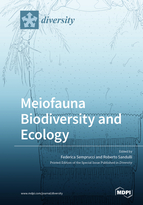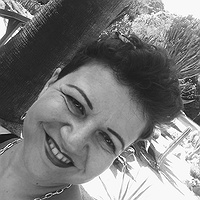Meiofauna Biodiversity and Ecology
A special issue of Diversity (ISSN 1424-2818). This special issue belongs to the section "Marine Diversity".
Deadline for manuscript submissions: closed (31 March 2020) | Viewed by 63186
Special Issue Editors
Interests: meiofauna; nematoda; benthic biodiversity; marine pollution; ecological quality assessment
Special Issues, Collections and Topics in MDPI journals
Special Issue Information
Dear Colleagues,
The Diversity Journal is about to launch a Special Issue dedicated to Meiofauna Biodiversity and Ecology.
Soft-bottom habitats cover the vast majority of the ocean floor and constitute the largest ecosystem on Earth. These systems supply fundamental services, such as food production and nutrient recycling, to human beings. It is well known that meiofauna are an abundant and ubiquitous component of sediments, even though their biodiversity and importance in marine ecosystem functioning are still yet to be fully investigated. In this Special Issue, the meiofaunal biodiversity trends in marine habitats worldwide are documented, along with the collection of empirical evidence on their role in ecosystem services, such as the production, consumption, and decomposition of organic matter, and energy transfer to higher and lower trophic levels. Meiofaunal activities, like feeding and bioturbation, induce changes in several physico-chemical and biological properties of sediments, and might increase the resilience of the benthic ecosystem processes that are essential for the supply of ecosystem goods and services required by humans. As a key component of marine habitats, the taxonomical and functional aspects of the meiofaunal community are also used for the ecological assessment of the sediments quality status, giving important information on the anthropogenic impact of benthos.
Dr. Federica Semprucci
Prof. Dr. Roberto Sandulli
Guest Editors
Manuscript Submission Information
Manuscripts should be submitted online at www.mdpi.com by registering and logging in to this website. Once you are registered, click here to go to the submission form. Manuscripts can be submitted until the deadline. All submissions that pass pre-check are peer-reviewed. Accepted papers will be published continuously in the journal (as soon as accepted) and will be listed together on the special issue website. Research articles, review articles as well as short communications are invited. For planned papers, a title and short abstract (about 100 words) can be sent to the Editorial Office for announcement on this website.
Submitted manuscripts should not have been published previously, nor be under consideration for publication elsewhere (except conference proceedings papers). All manuscripts are thoroughly refereed through a single-blind peer-review process. A guide for authors and other relevant information for submission of manuscripts is available on the Instructions for Authors page. Diversity is an international peer-reviewed open access monthly journal published by MDPI.
Please visit the Instructions for Authors page before submitting a manuscript. The Article Processing Charge (APC) for publication in this open access journal is 2600 CHF (Swiss Francs). Submitted papers should be well formatted and use good English. Authors may use MDPI's English editing service prior to publication or during author revisions.
Keywords
- Taxonomical and functional diversity
- Ecological assessment
- Bioindicator species
- Benthic component interactions







